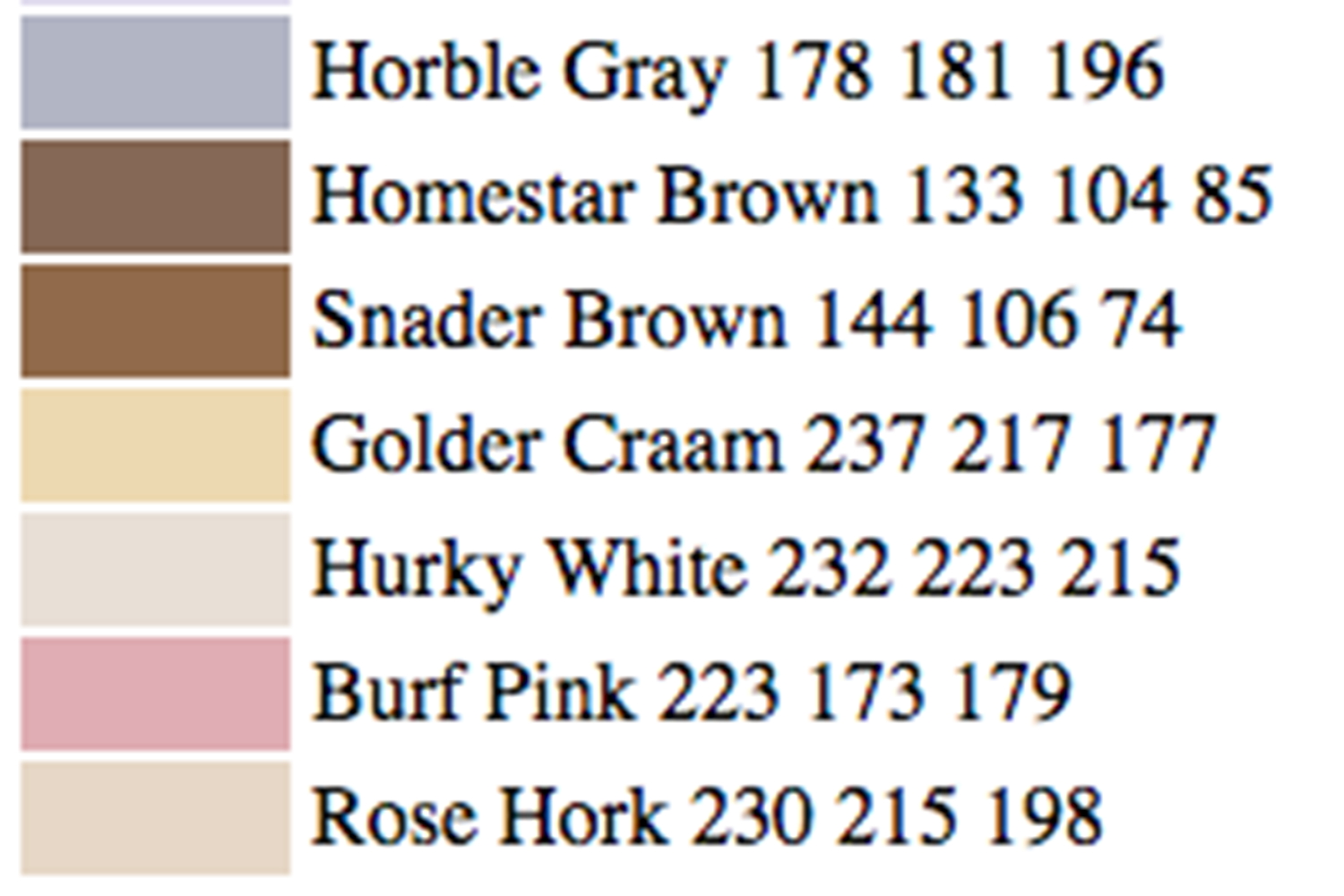
Computer scientist and artist Janelle Shane developed a neural network that creates and names new paint colors. It sounds like an easy enough task. You and I might even match the pros at Sherwin-Williams. Shane’s AI, on the other hand, struggled.
Shane fed her neural net around 7,700 of Sherwin-Williams’ paint colors, including their red/green/blue color values, and told the algorithm to create new colors while assigning them appealing names. Maybe it would come up with Sensuous Cyan, Melancholy Mauve, or Smokey Drapes. (Those are our attempts, at least.)
Instead, some of the standout names included Dorkwood, Stanky Bean, Gray Pubic, and Bank Butt. Here’s another small sample in the image below.
In the neural net’s defense, it did invent some more clever — and potentially useful — names, like Power Gray, Ghasty Pink, and Rover White. But the majority came out in the vein of Burf Pink and Rose Hork.
And to be fair, the task was pretty tough for an algorithm that did not have that much context to work with.
“The names in the original dataset are highly varied and very dependent on associations with words and concepts outside the dataset,” Shane told Digital Trends. “A neural network is good at learning recurring patterns, but since a word was rarely used twice in the dataset, the neural network didn’t have a good chance of being able to determine that a geranium, for example, is a flower that’s often red or pink.”
Without context or an outline of what it is doing, the neural network is grasping for words. But that doesn’t mean the AI was totally incompetent and sometimes its names sounded pretty sophisticated even if they didn’t make much aesthetic sense. Shane explains: “The other thing that neural networks are good at is figuring out how to generate pronounceable English words. The neural net was able to come up with new words that weren’t in the original dataset — but had no context that might tell it that words like ‘butt’ and ‘hork’ were to be avoided.”
See more of Shane’s creations over on her Tumblr page.



